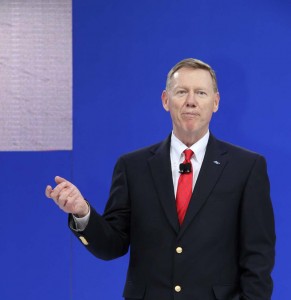
While CEO Mulally doesn't appear to be retiring anytime soon, Ford is offering buyouts to as many as 98,000 current retirees.
Shedding debt and liabilities has become one of the key strategies for Ford Motor Co. CEO Alan Mulally, and the maker’s latest move is to offer buyouts to 98,000 salaried and white-collar retirees in an effort to trim by a third Ford’s overall $49 billion in U.S. pension liabilities.
The maker says it does not yet have a clear indication of how many of its retirees will accept the new offer but it needs to take steps to deal with a looming problem that has been weighing down its balance sheet. On a global basis, Ford’s $74 billion pension liabilities were underfunded by $15.4 billion at the end of last year.
The program will be rolled out in waves, according to a company official, with offers going out to between 12,000 and 15,000 retirees by the end of the third quarter. The rest will roll out over the following year, with the offers being made by random selection.
The lump-sum buyouts be will tailored to each individual retiree and will be based on such factors as life expectancy and the actuarial data the federal government uses to calculate pension obligations.
“It could take millions or billions of dollars of obligations off our books,” Rick Popp, Ford’s director of employee benefits, told The Detroit News.
Other manufacturers, such as General Motors are reportedly also considering retiree buyouts as they move to lower pension obligations. All three of the Detroit-based automakers have now established so-called Voluntary Employee Benefit Associations, or VEBAs, that have effectively transferred the responsibility for union retiree health care to funds run by the United Auto Workers Union.
But the manufacturers still face significant issues funding the rest of their retirement obligations.
Compounding the situation for Ford, the maker wasn’t able to use the courts to clear away debt as rivals General Motors and Chrysler did through their 2009 bankruptcies. Ford borrowed $23.5 billion in 2006 in the hope of sliding through an economic downturn.
That debt now stands at $13.5 billion as the result of an aggressive pay-down plan, with Ford on target to bring that figure down to $10 billion by 2015.
That was a major factor behind the decision by both the Fitch and Moody’s ratings agencies to upgrade Ford’s debt to investment grade, in recent weeks. In turn, that allowed Ford to reclaim ownership of its Blue Oval logo and other assets that had been put up as collateral.
